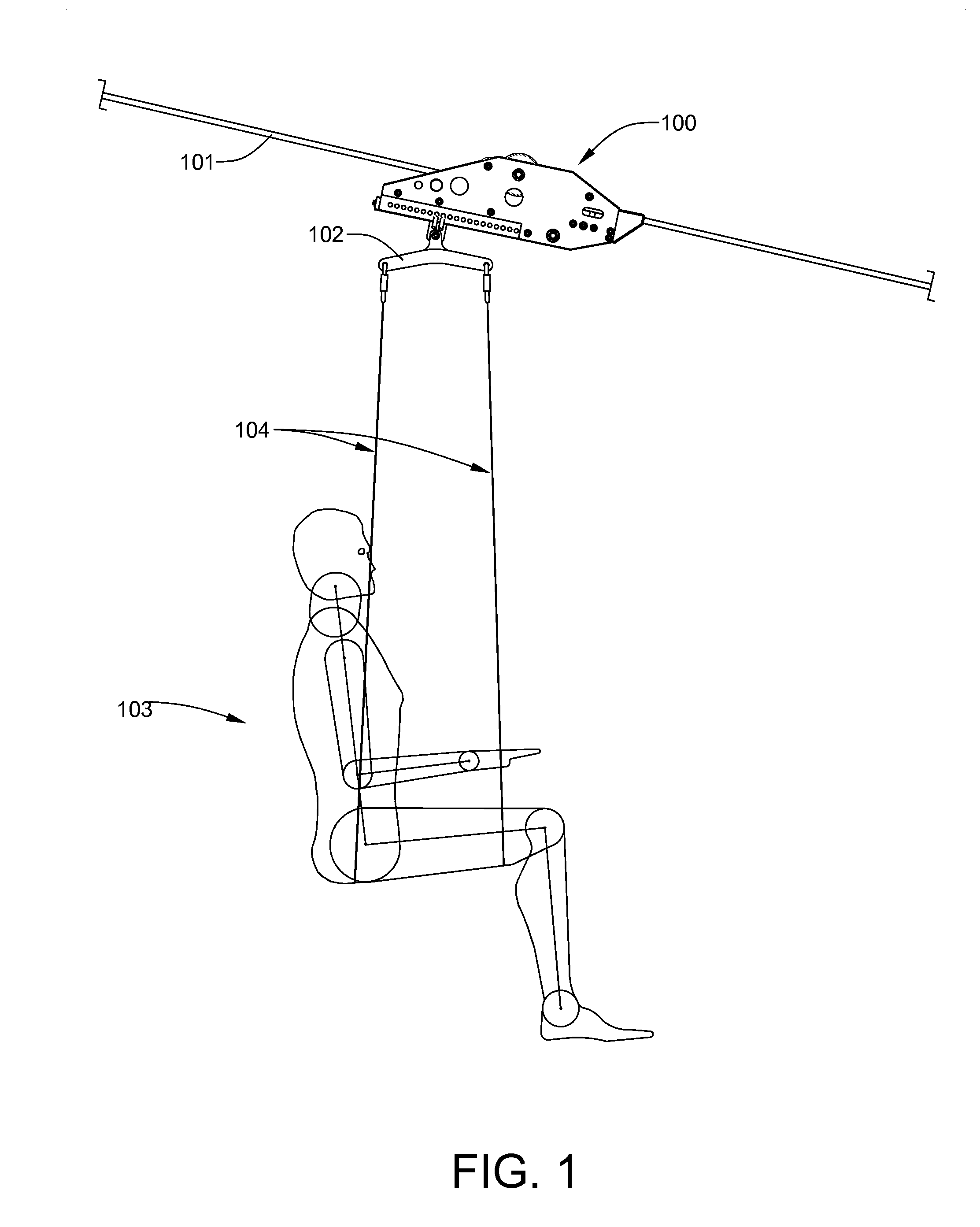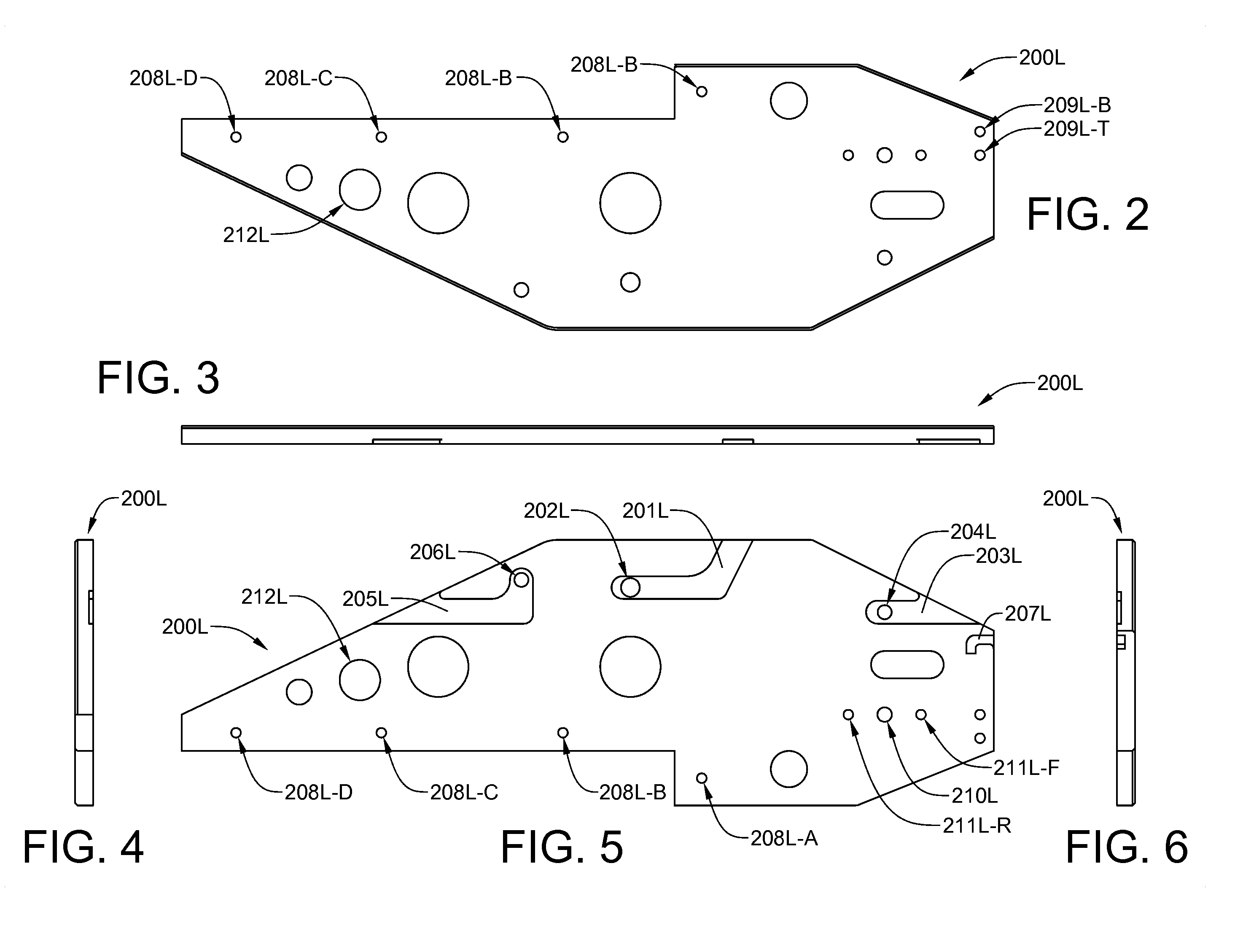Trolley for downhill zip line thrill ride
a zip line and thrill ride technology, applied in the direction of braking systems, rope railways, roads, etc., can solve the problems of high friction and related heat, trolley pulleys may fail prematurely, and the costa rican system is really quite primitive, so as to increase the force applied by the brake pad, reduce the risk of personal injury, and reduce the effect of friction
- Summary
- Abstract
- Description
- Claims
- Application Information
AI Technical Summary
Benefits of technology
Problems solved by technology
Method used
Image
Examples
Embodiment Construction
[0069]The downhill thrill ride zip line trolley will now be described in detail with reference to the attached drawing FIGS. 1 through 54. It should be understood that although the drawings are intended to be merely illustrative, a reasonable attempt has been made to provide drawings which are drawn close to scale. In addition, an effort has been made to ensure that all components shown on a single drawing sheet are drawn to the same scale. For any three-digit item number, the first digit indicates the drawing figure number where the designated item is most clearly seen for the first time. For any four-digit number, the first two digits indicate the drawing figure number where the designated item is most clearly seen for the first time.
[0070]Referring now to FIG. 1, the zip line trolley 100 of the present invention is shown suspended from an inclined cable 101. The zip line trolley 100 is designed for permanent, long-term installations of inclined-cable thrill rides, where factors o...
PUM
 Login to View More
Login to View More Abstract
Description
Claims
Application Information
 Login to View More
Login to View More - R&D
- Intellectual Property
- Life Sciences
- Materials
- Tech Scout
- Unparalleled Data Quality
- Higher Quality Content
- 60% Fewer Hallucinations
Browse by: Latest US Patents, China's latest patents, Technical Efficacy Thesaurus, Application Domain, Technology Topic, Popular Technical Reports.
© 2025 PatSnap. All rights reserved.Legal|Privacy policy|Modern Slavery Act Transparency Statement|Sitemap|About US| Contact US: help@patsnap.com



